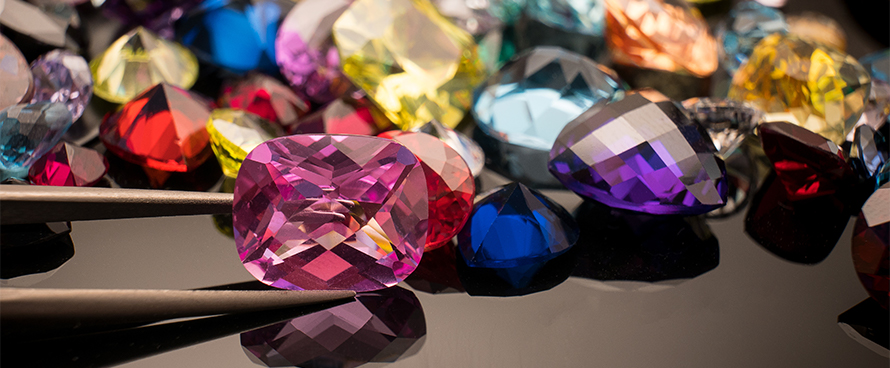For several years, lab gemstones have grown in popularity among jewelry lovers the world over. But what are they exactly? Scroll for answers to some of the most popular questions about lab-created versus natural, earth-mined gemstones.
What is a lab gemstone?
Also referred to as “synthetic,” lab-created gemstones are in fact real and genuine; just man-made instead of mined from the earth. Believe it or not, lab gemstones are chemically, physically and optically identical to their natural counterparts! This is the key difference between stones created in a lab and those artificially-made. Lab gemstones come from the same recipe as those found underground.
How is a lab gemstone made?
There are essentially two ways to create gemstones in a lab:
- HPHT — High-pressure high-temperature. This process mimics how earth-mined gemstones are made, but in a fraction of the time. HPHT is when an engineer crafts a liquid compound comprised of gemstone material and carbon, then utilizes the two components of heat and pressure to create a crystal.
- CVD — Chemical vapor deposition. This process essentially ‘grows’ a gemstone layer by layer in a chamber from a tiny chip of gemstone crystal.
Why would someone be interested in a lab-created gemstone?
These gemstones are appealing for four basic reasons:
- Lab-created stones can be less expensive than natural ones.
- They have a lighter carbon footprint.
- They have fewer flaws/inclusions.
- They’re unique!
Are lab-created stones easy to spot?
It takes an extremely trained eye with the right instruments to determine a gemstones’ origin.
Are all lab-created gemstones essentially the same, or does it matter where I buy?
It’s important to purchase lab-created gemstones from a trusted jeweler like Swierenga’s. We disclose the gem’s details and explain how to properly care for it. We want you to understand exactly what you’re purchasing and know you’re getting your money’s worth.

